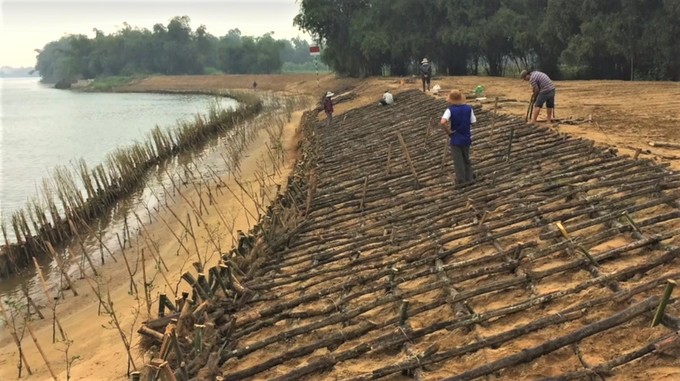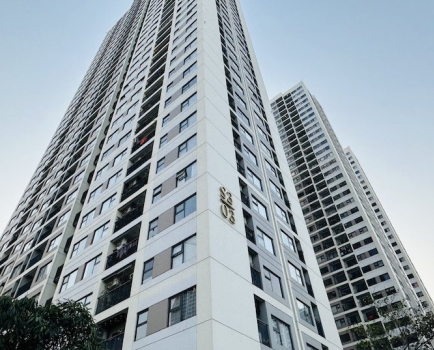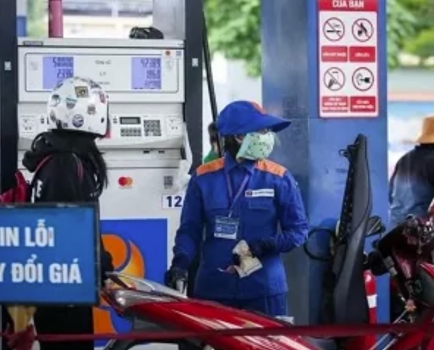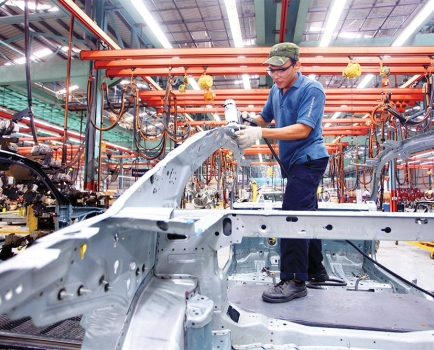Woman takes leaf out of Mother Nature’s book to protect eroding riverbanks
Wed, 26 Jun 2019 14:19:00 | Print | Email Share:

in Quang Nam Province. Photo courtesy of An Nhien Farm.
A Vietnamese woman is showing how to prevent landslides and erosion along rivers by growing trees in the central province of Quang Nam.
Vu Thi My Hanh has returned to the way nature showed us to create embankments held together by the roots of plants in a commune in Hoi An Town and nearby Triem Tay Village.
Hanh, 32, a graduate of the Foreign Trade University, Hanoi, left the capital for Triem Tay in 2013 to join architect Ngo Anh Dao as a consultant for a project funded by UNESCO to develop an eco-tourism plan for the village.
When she first arrived the banks of the Thu Bon River along Dien Ban Town, home of Triem Tay, faced a severe threat of being swept away, especially during the flooding season. It was common for locals not to build houses anywhere near the river, fearing their properties could be washed away at any time.
Hanh and Dao decided to find an eco-friendly way to embank the river to save its banks and keep the village in its original state.

Vu Thi My Hanh checks on her green embankment along the Thu Bon River
in Hoi An Town. Photo provided by Vu Thi My Hanh.
They set up an organic farm over four hectares (10 acres) along the river. The farm, An Nhien, meaning peaceful and happy, grew crops, raised poultry and undertook environment-friendly activities, and also provided Hanh with her template for a non-concrete embankment.
In 2015 she planted more than 700 mangrove trees along the river, but a flood a year later destroyed them all.
But Hanh learned from her mistakes. Together with Dao she designed an embankment that would use a number of varieties of trees growing in the area.
Their new 200-meter-long embankment had three zones, starting from the water and going deep into shore, and had mangrove apple trees, common reeds and Australian pines in that order.
"Common reeds grow rapidly while mangrove apple trees can withstand harsh conditions," Hanh said to explain the choice of vegetation.
"At the foot of each zone, we lay bamboo poles densely to prevent erosion. We limit the human impact on this project as much as possible and let nature do its job. Let those species live together in that ecosystem so that they can support each other to cope with the harshness of nature."
Now the embankment has become strong enough to protect An Nhien Farm from soil erosion.
Seeing its effectiveness, authorities from Hoi An last year asked Hanh and her team to do the same in Cam Kim Commune. They obliged and a green embankment 400 meters long can now be seen protecting the river bank in Cam Kim.

The green embankment (L) Hanh built in Cam Kim Commune in Hoi An.
Photo courtesy of An Nhien Farm.
An Nhien Farm has begun to use the reeds to make straws, and currently supplies 1,000 a day to restaurants and coffee shops in Hoi An and other parts of Quang Nam.
"This solution costs 70 percent less than a concrete embankment, and Hoi An will continue to apply this method in other riverside areas," Nguyen The Hung, the town’s deputy chairman, said.
A report by the United Nations Environment Program, UNESCO and the Union of Concerned Scientists recently warned that Hoi An is among the world’s heritage sites at risk from climate change. Much of Hoi An lies two meters or less above sea level, making it vulnerable to rising seas and storm surges, the report said.
Quang Nam is seeking permission for a VND700-billion ($30.2 million) project to fight severe erosion at Cua Dai beach, a precious tourism resource for Hoi An.
Watch the video of how Hanh's green embankment was built.
By: Dac Thanh/Vnexpress
---------------------------------------------
Same category News :













